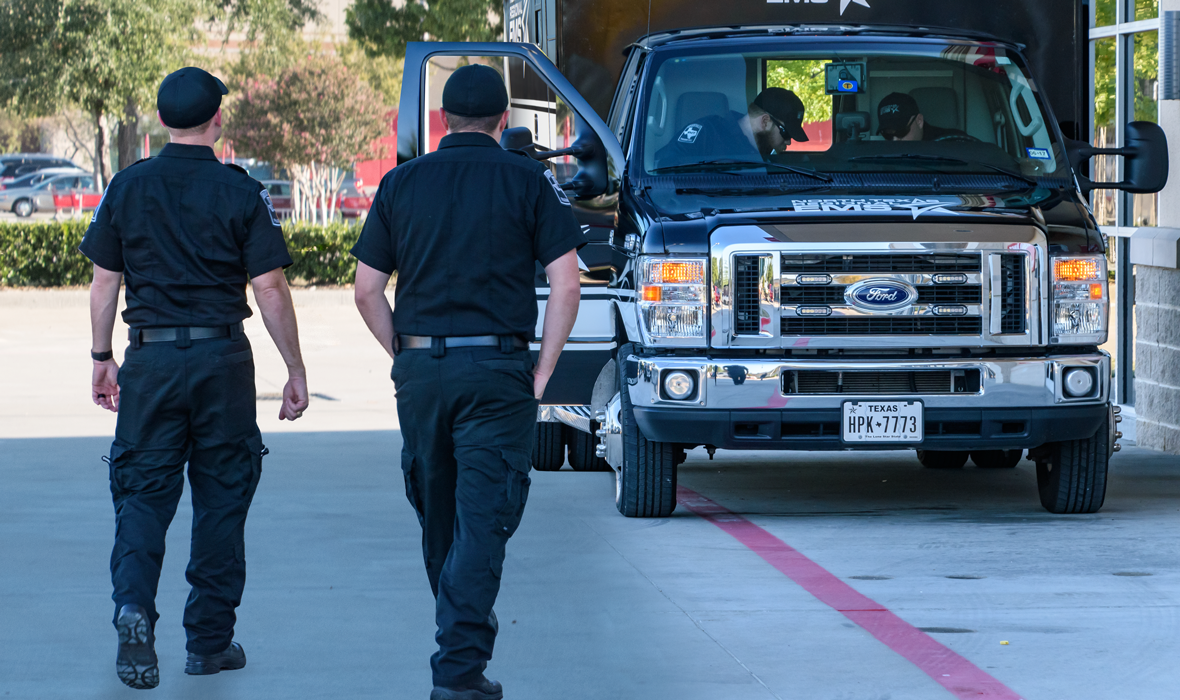Pulsara Around the World - 2025 Recap and January 2026
December Recap After an incredibly busy events year with 102 conferences, trade shows, and sponsorships, December was on the slower side for us, with...
3 min read
 Team Pulsara
:
Sep 13, 2019
Team Pulsara
:
Sep 13, 2019

EDITOR'S NOTE: Special thanks to our guest blogger, Lee Varner, MSEMS, EMT-P, CPPS. Lee is the Director of the Center for Patient Safety, and has over 20 years of experience in transformational leadership and patient safety to provide consultation and educational services for improving performance effectiveness, quality initiatives, healthcare best practices, culture training and patient safety strategies.
__
Recently, I was part of a conversation with a group of EMS leaders who were talking about clinical errors. They discussed the different types of clinical errors that they have seen and which ones kept them up at night. A few offered examples where a medication error or airway event harmed patient.
I was happy to hear that everyone realized that most adverse events were usually part of system failure and not just caused by a reckless EMT or paramedic. Furthermore, everyone agreed that EMS clinicians are competent, compassionate, and dedicated people who don’t show up for duty expecting to harm a patient. But when harm does reach a patient, it affects everyone: the patient, family, the EMT or paramedic, and the entire agency. There was no disagreement that harm from medical errors was affecting everyone involved, but the nagging question was, how to reduce those errors?
Some thought the best way to address clinical errors would be measuring or quantifying the different types, then comparing the results among agencies. While this sounded good, it became clear that collecting event data wouldn’t be easy or accurate. After all, most events aren’t reported or even realized by the clinician, and, sadly, people working in a punitive culture aren't likely self-report their mistakes.
As the discussion continued, a degree of paralysis or indifference seemed to set in as everyone realized this would be harder than they thought. Something more comprehensive was required beyond counting mistakes; there needed to be a cultural shift to drive improved reliability of the care.
Patient safety is a specialty area in healthcare that works to prevent or reduce harm from reaching patients. While there are many widely accepted steps to minimize patient harm, one of the first and most essential steps is recognition by leaders that there is a problem. Next, they must take action. Below are three tips to help your organization succeed.
1) Set the tone, don’t wait until harm reaches a patient.
We know good leaders lead by example. They also take ownership of the care provided at their agency, good or bad. If leaders aren’t actively discussing, planning, or setting expectations around patient safety, will anyone else prioritize or pay attention to the topic? Leaders need to be proactive, not reactive, to patient safety.
2) Provide the infrastructure, accountability, and sustainability
We have all seen situations where a new idea or project slowly fizzles out and becomes the “flavor of the month”. Failure can be demoralizing for everyone, and it can create an atmosphere of apathy, where new ideas or improvements are discouraged or dismissed. Therefore, leaders need to offer the tools, resources, and time to support change, recognizing the cultural barriers which will likely be encountered. Improving patient safety requires a long-term commitment to implement measures, goals, and the execution of a plan.
3) Develop a patient safety plan and focus on the right things.
It's easy to be distracted by competing priorities, but what's more important than keeping patients safe? Most EMS agencies have plans for various operational contingencies, but few have developed a plan to keep patients safe. A patient safety plan should be part of the agency’s strategic planning, aligned with its mission, vision, and values. The board of governance, medical director, and staff should all participate in its development. Ideally, everyone contributes to deploying the plan, and they follow it every day.
Start today, meet us at EMS World.
We all expect that when we are sick or injured, the person taking care of us will be kind. We also expect that the care we receive will be safe. As EMS providers, we can’t take safe healthcare for granted or expect somebody else to ensure its reliability. As a leader, it's your job to set a compelling direction and tools for safe care at your organization.
The Center for Patient Safety is a non-profit organization, and our mission is to reduce preventable harm. If you are a current or future leader who wants to take action and develop a plan to support safe care, then join us at EMS World Expo on October 14 for a special pre-conference workshop.
Those attending the workshop will:
Has your organization laid out a plan for prioritizing patient safety? We'd love to hear from you.

December Recap After an incredibly busy events year with 102 conferences, trade shows, and sponsorships, December was on the slower side for us, with...

Editor's Note: In July 2025, EMS1 and Fitch & Associates released their annual EMS trend survey, What Paramedics Want, proudly sponsored by Pulsara....
![[PRESS RELEASE] Published Research Finds Up to 31% Faster STEMI Treatment Times in Rural Hospital Setting with Pulsara](https://www.pulsara.com/hubfs/_1_website-page-blog-assets/pulsara-hosp-teams-assign-cardio-stemi-rn-1200x701.jpg)
Published research shows how using Pulsara, alongside standardized field activation and a focus on stakeholder relationships, improves STEMI care and...